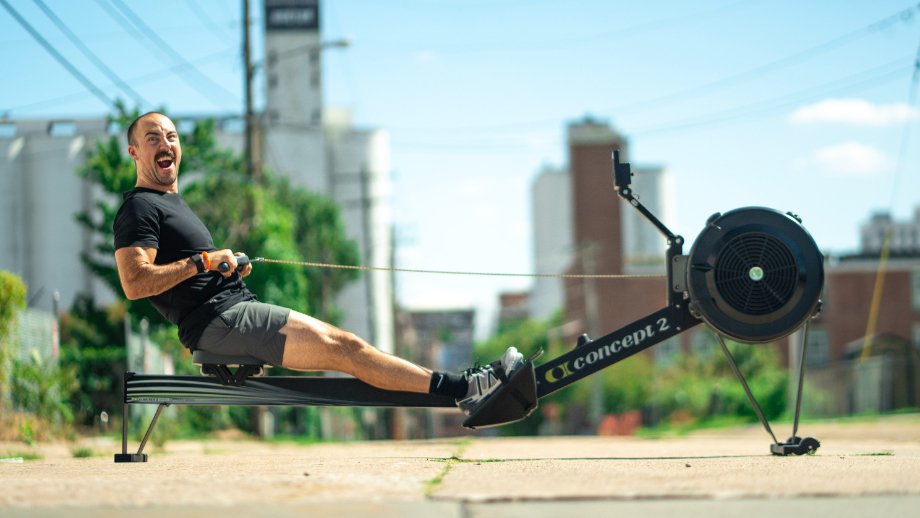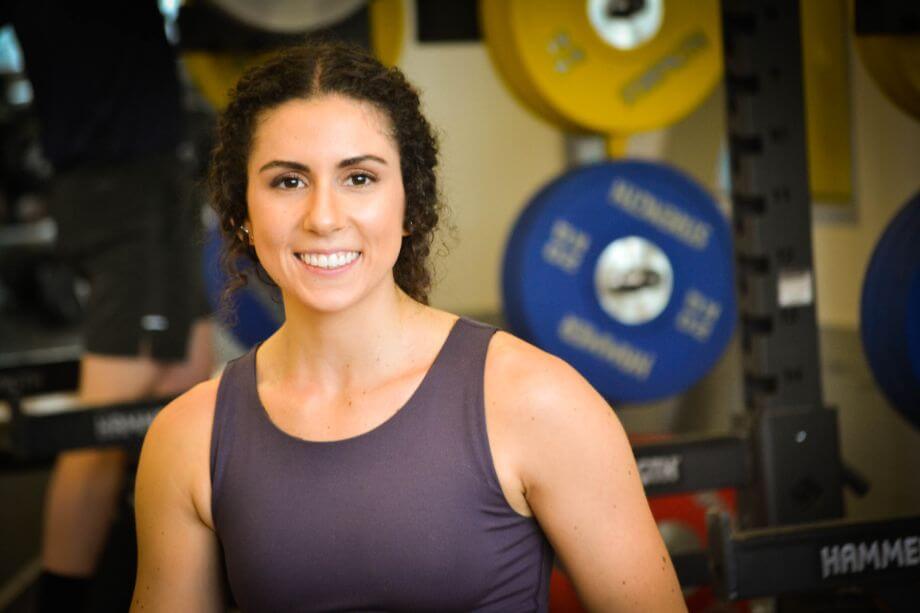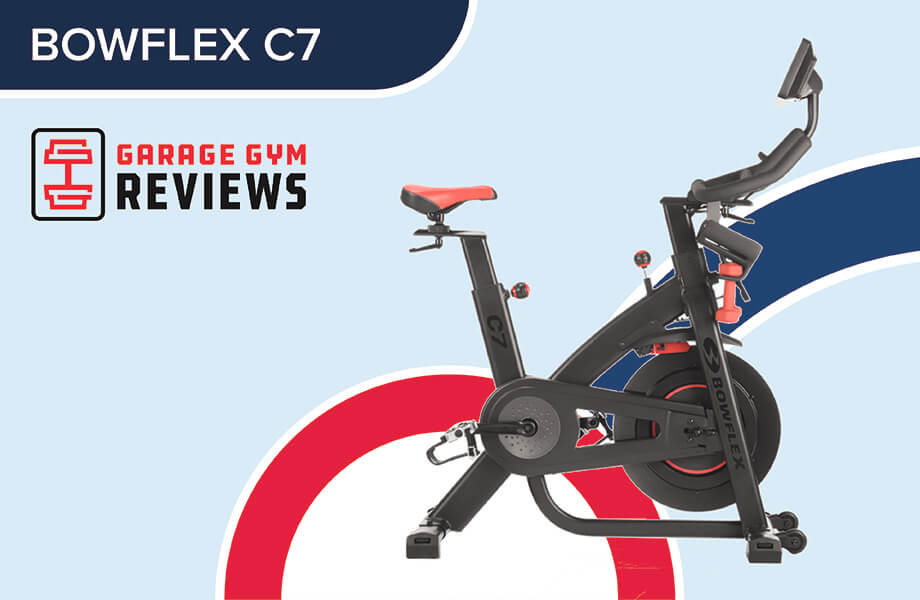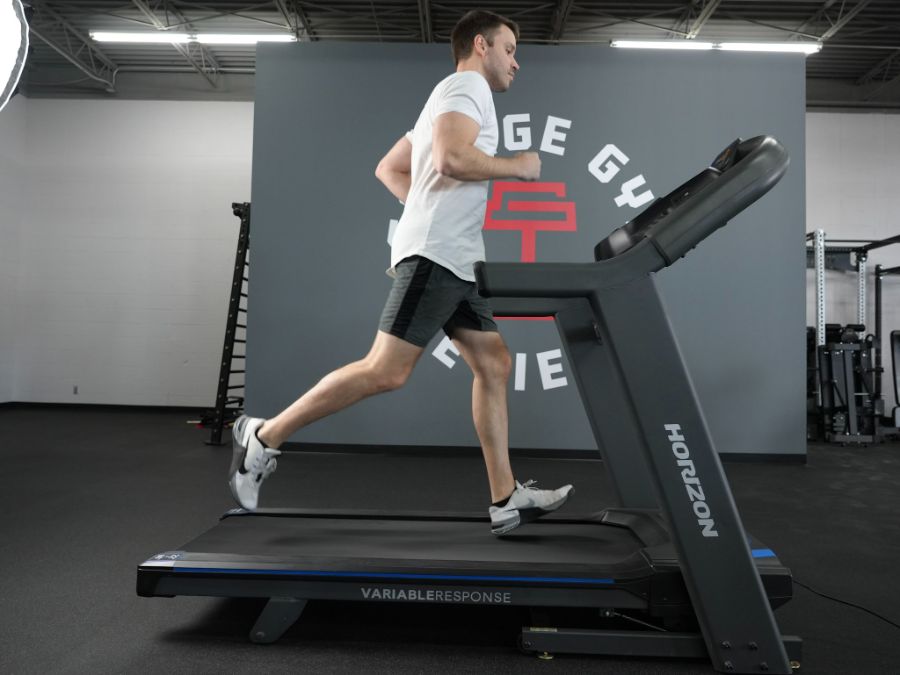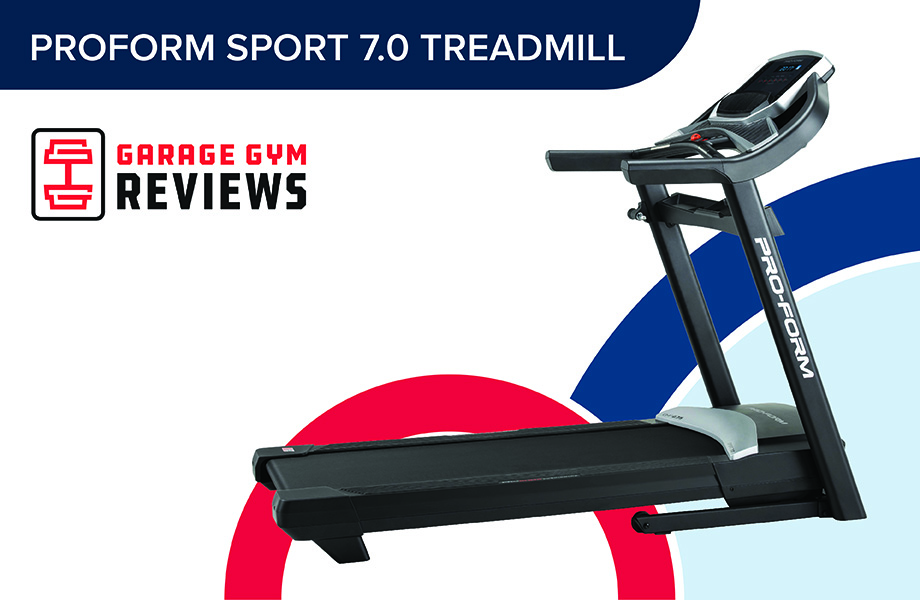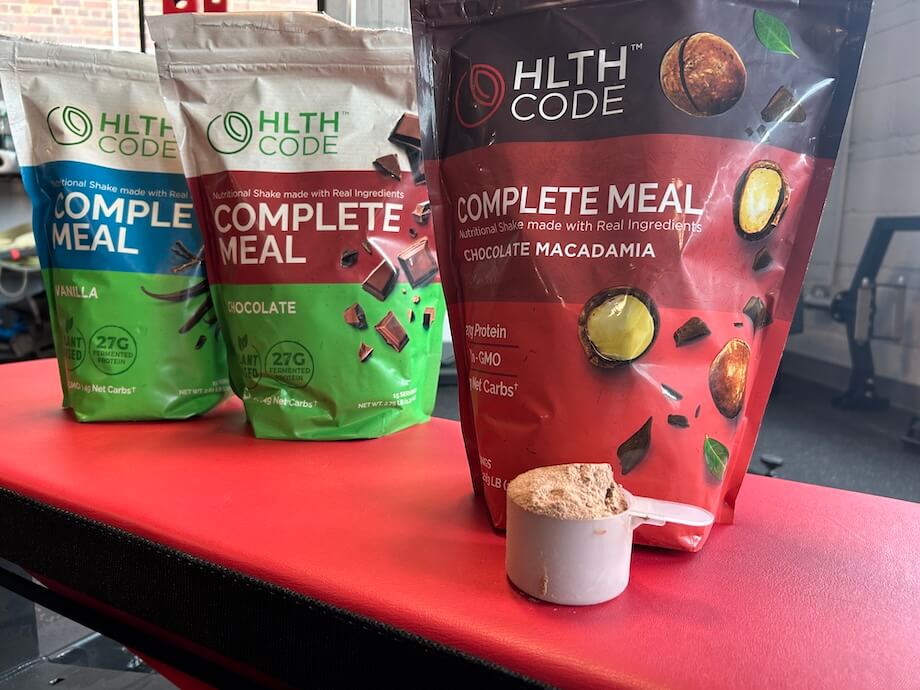Rowing is an underutilized form of cardio exercise. When performed correctly—as we’ll show you in this article with a video tutorial and step-by-step analysis of form and technique—rowing can improve your health and fitness in a number of ways.
After you learn how to use a rowing machine, you’ll learn why we recommend them for just about anybody’s home gym. Why else would we come up with a list for the best rowing machines?
Benefits Of Using A Rowing Machine
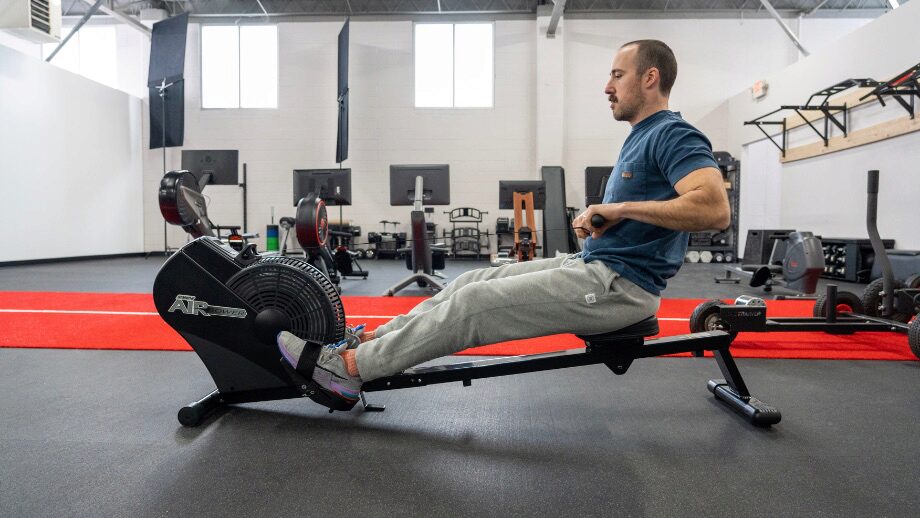
You might be wondering, “Why would I use a rowing machine in the first place?” Well, dear reader, we’ll go over just some of the reasons why we think using a rowing machine could be beneficial to your overall health and cardiovascular fitness.
Cardiovascular Health
Improved cardiovascular health (the health of your heart and blood vessels) is the primary benefit of rowing, as it’s primarily a cardio workout. Rowing on a regular basis will strengthen your heart, increase lung capacity, and improve the efficiency of your circulatory system.
Endurance
Endurance is your body’s ability to sustain a given activity, such as rowing, for an extended period of time. Because rowing combines cardio exercise and resistance exercise, it improves your cardiovascular endurance as well as your muscular endurance. Rowing consistently will improve your overall endurance for obvious reasons, but those improvements will transfer to other activities, like actual outdoor rowing, as well.
Strength
Although the primary outcome of rowing is improved endurance, rowing machines also provide some strength training benefits. Each time you complete a rowing stroke, you’re pushing and pulling against the resistance of the flywheel, using all of your major muscles and thereby making them stronger.
Low-Impact
Unlike some other forms of cardio exercise (*ahem* running), rowing provides all the benefits of cardio training without all of the impact, similar to one of the many reasons why people like exercise bikes. People with sensitive or painful joints will appreciate the smooth, gliding motion of a rowing erg.
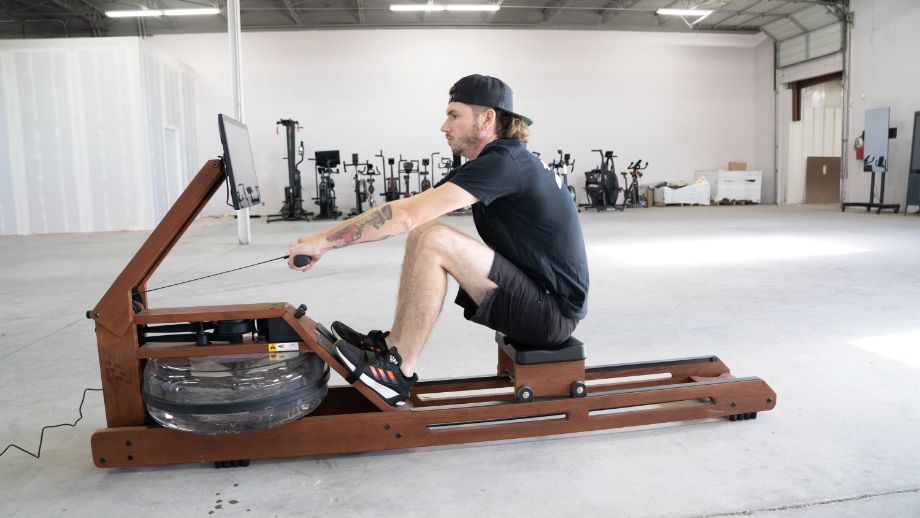
Time Efficiency
Most people find themselves short on time to work out, so those interested in rowing will be happy to learn that rowing is a very time-efficient form of exercise (thanks to the fact that rowing works your upper-body, in addition to your legs).
This is especially true if you choose to do a high-intensity interval training HIIT rowing workout: Studies show that HIIT burns more calories than low-intensity, steady-state cardio training in the same time frame.
Versatility
One under-emphasized benefit of rowing machines is that they’re incredibly versatile. Many people will never get bored of rowing, especially if they use a rowing machine that has a nice display screen with interactive programming.
Even without built-in programming, rowers support a range of workout types: long, low-intensity endurance sessions; short, high-intensity rowing machine workouts; and strength and cardio circuits when paired with other equipment.
Rowing Terms You Should Know
If you’re new to the world of rowing, or it’s been a while, there may be some terms in this article or on your odometer that may seem a bit foreign to you. We’ve compiled this handy English-to-rowing machine dictionary to break down some of the most important terms you should know.
Stroke
A complete row, broken down into four parts: Catch, drive, finish, recovery. We’ll go over the four different parts in a later section.
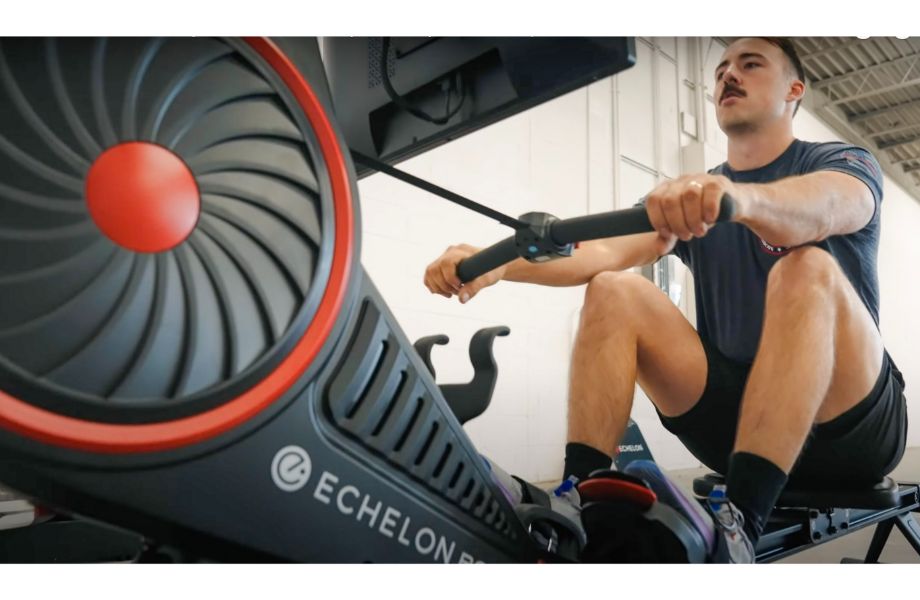
Stroke Rate
The number of strokes you’re able to do in a minute.
Split Time
The amount of time it takes you to row 500 meters (about a third of a mile). You’ll see this on many rowing machine odometers.
Dead Spot
The dead spot refers to the part of a stroke where there’s a decrease in tension or resistance, but many higher end models may have no dead spot at all.
Resistance Mechanism
This refers to how rowers create resistance, and there are five main types: Water, air, magnetic, hydraulic, and cable/cord.
How To Use A Rowing Machine Properly (With Video Tutorial)

Now you’re ready to row, row, row yourself merrily to your goals…well, not yet. We recommend reading through our handy guide first, and watch yours truly break down how to use a rowing machine correctly with proper form.
Proper Rowing Technique
Establishing a good starting position before attempting to pull on a flywheel is crucial for injury prevention and to get the most out of your rowing workout. When you sit on a rower, remind yourself of these key setup points:
- Neutral spine: Your back should adopt a strong, neutral position and maintain the natural curve of your spine while leaning slightly forward. Don’t hunch your shoulders or arch your lower back.
- Engaged core: Your abdominal muscles should be tight; think of drawing your belly button toward your spine.
- Arms extended: Extend your arms fully without rounding your shoulders. Get a good, full grip on the handles to prevent slipping. Palms should face down and wrists should be flat.
- Snug feet: Your feet should rest snugly but comfortably between the foot plates and heel cradles, and your feet should be able to press flat into the platform when you push away. You need enough wiggle room to flex your foot when you return from a pull, but not so much that you might slip out.
- Gaze forward: Look at the monitor or something else directly in front of the machine. Turning your neck or shoulders can cause an injury.
Step 1: Legs
The first step to a good rowing stroke is a strong push with the legs. Driving through the heels, engage your quads, glutes, and hamstrings to fully extend your legs. You want to stop just short of knee lockout, making sure to keep your feet flat in the shoe cradles—don’t push onto your toes.
Step 2: Lean
Timing is of the essence here. As your legs reach full extension, lean back to create an angle of about 100 degrees between your torso and your legs. Don’t lean back too far: This creates a lapse in power during the rowing stroke and also puts your back at risk for injury.
Step 3: Pull
Once again, timing is key. Start the pull with your arms as you reach the end of your lean. You want to start pulling just before you reach full range of motion in the lean—if you wait too long, your stroke will be choppy and inefficient.
Step 4: Reverse
You’ve learned “legs, lean, pull.” The last step to complete one rowing stroke is to return to the start position in reverse order: Extend your arms, lean your torso forward, and bend your knees and hips.
Another Way To Think About Rowing Form
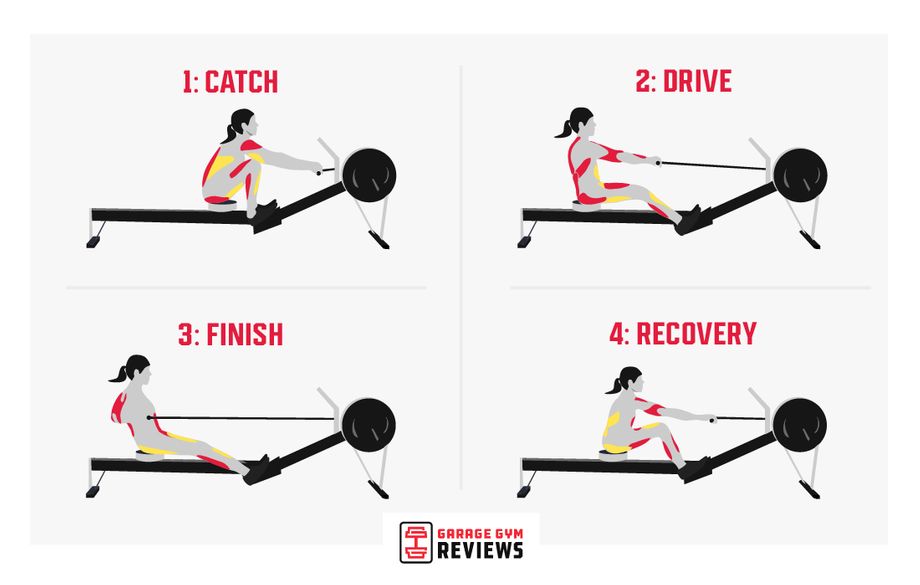
The great thing about rowing is that it can be coached in many ways, with the same result: pristine rowing form. Some beginners find it helpful to break rowing form down in a different way, which is shown in the graphic above and explained below.
Step 1: Catch
In rowing, the catch position refers to the point at which you feel the most resistance against the flywheel—the beginning of the stroke. This is your starting point and the returning point after each full stroke. As you return to this position after a pull, your heels may lift as needed and your torso should lean slightly forward.
Step 2: Drive
The drive is the “legs” portion of the stroke. All of the same rowing techniques apply: Drive through the heels; maintain a strong, flat stance; engage the quads, hamstrings, and glutes; and stop just short of knee lockout.
Step 3: Finish
The finish combines both the “lean” and “pull” cues from above into one step. Pro tip: The cable should move in a straight line—no bouncing up and down—during your lean and pull.
Step 4: Recovery
The recovery is the reversal of the drive and finish to return to the catch, or starting point. Extend your arms, then lean forward, and finally, bend your knees and hips to return.
Common Rowing Mistakes To Avoid
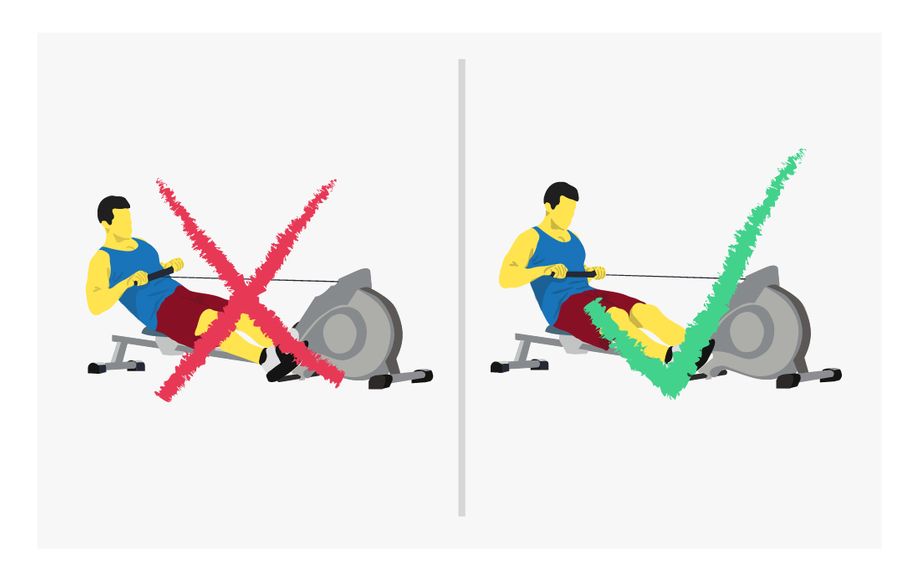
Regardless of which rowing cues resonate with you, the important thing is to avoid common mistakes seen in rowing.
Poor Start Position
Without a good start position, you’ll find it tough to establish good rowing form. You’re only as strong as your weakest link, and a weak start will impact every stroke. Refer to the setup steps above to learn the proper starting position for rowing.
Not Reaching Full Extension
You leave a lot of power on the table if you fail to reach full extension in the legs or lean. Your legs should almost reach knee lockout, and your torso should make an angle of about 100 to 110 degrees with your thighs. On the return, your arms should reach full extension in the elbows to maximize power on the next pull.
Pulling Too Early
Many beginner rowers make the mistake of leaning back or pulling on the cable before their legs reach full extension. This sets you up for a choppy, inefficient stroke and should be avoided.
Sloppy Recovery
During the recovery portion of a rowing stroke, it’s important to maintain the correct timing of events: arm extension, forward lean, lower body bend. Doing things out of order reduces efficiency and power, and can mess up your next stroke.
Varied Stroke Rate
Your stroke rate refers to how many times per minute you pull the cable on a rowing erg. One of the most common mistakes seen in beginners is an inconsistent stroke rate, meaning their pace changes throughout the course of a minute, or having a stroke rate that is super fast in the beginning of a workout and quickly petering out. One easy way to control your stroke rate is to do a one-second pull and a two-second recovery.
Free Rowing Workout For Beginners
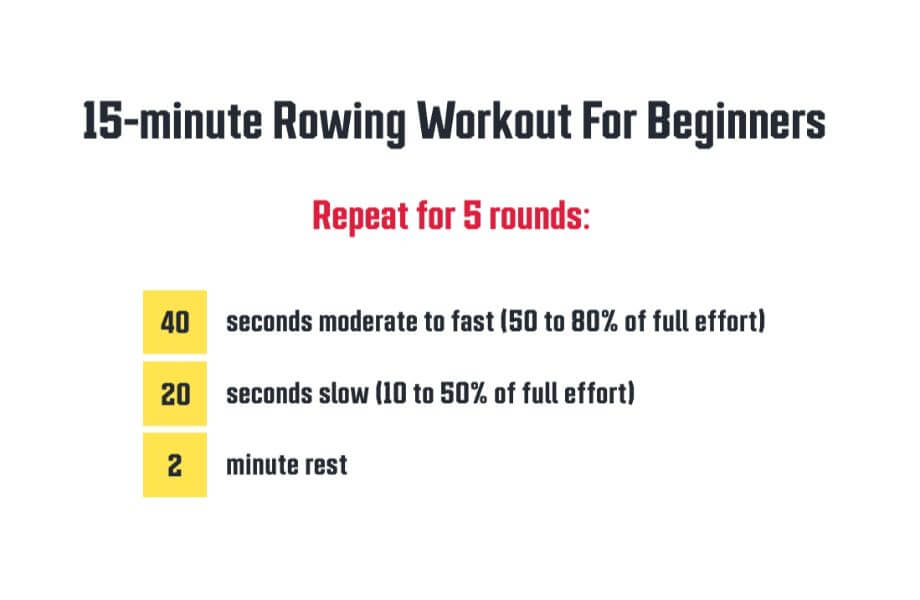
Still trying to learn how to use a rowing machine as a beginner? Try this free, beginner-friendly strength and cardio circuit workout to incorporate rowing into your routine.
4 Rounds For Time (RFT)
- 500-meter row
- 25 kettlebell swings (32 kg or 24 kg)
- 500-meter row
- 25 box jumps (30-inch or 20-inch box)
Pro tips for this workout:
- Take the row at a moderate pace—it should be something you can sustain throughout the entire workout. A good goal is 2 to 2.5 minutes per 500 meters.
- Pick a kettlebell weight that allows you to break the 25 reps into a maximum of two sets. You’ll waste energy by putting it down and picking it up too many times. Although weight recommendations are provided in the workout, you can choose any weight you are comfortable with.
- It’s better to go slow and steady on box jumps versus sprinting through the first set and then realizing your legs are on fire.
FAQs About How to Use a Rowing Machine
How many calories can you burn using a rowing machine?
Many factors impact the total number of calories you’ll burn during a rowing workout. Your body weight and amount of lean mass largely influence calorie burn, as do things like the duration of your workout, the intensity of your workout, and the temperature you’re exercising in.
According to Harvard Health Publishing, a part of Harvard Medical School, rowing on a stationary erg (AKA, a rowing machine) burns 200 to 300 calories per 30 minutes of rowing at a moderate intensity, depending on body size.
Is rowing good for burning body fat?
Any form of cardio exercise, including rowing, can help you lose body fat, but it’s important to remember that exercise alone isn’t a guarantee for body recomposition (that is, losing fat and gaining lean mass).
To lose body fat, you must maintain a calorie deficit—AKA, burn more energy than you consume—over a period of time. Successful, long-term fat loss is the result of an exercise routine and healthy eating pattern you can stick to for the long haul.
What can a rowing machine do for your body?
Rowing is a phenomenal full-body workout. It provides all the benefits of cardiovascular training, including improved heart health, lung capacity, fat loss, reduced risk of disease, improved immune health, mood regulation, increased energy, and better sleep.
Additionally, rowing doubles as a light form of resistance training, which improves bone and joint health and strengthens muscles. Finally, rowing provides an opportunity for high-intensity training without the joint impact that comes with other forms of cardio, such as running.
How long should I row?
How long you should row depends on a number of factors, including your physical fitness level, your schedule, and the type of workout you’re doing.
For example, someone who is a beginner at rowing and wants to do a high-intensity interval training style of workout should keep their rowing workout short, building up exercise tolerance over time.
A good goal for beginners is to row at a moderate pace for 15 to 30 minutes. Someone who is an advanced rower may have no problem rowing for 45 minutes or more, even at a fast pace.
Is 30 minutes of rowing enough?
For most people, rowing for 30 minutes is plenty of exercise. Rowing for 30 minutes per day, five days per week, at a moderate pace meets the minimum of 150 minutes of exercise recommended in the Physical Activity Guidelines for Americans, 2nd Edition. If rowing for 30 minutes at a vigorous intensity or utilizing interval training methods, you’ll have no problem meeting those guidelines and reaping the many benefits of rowing.


